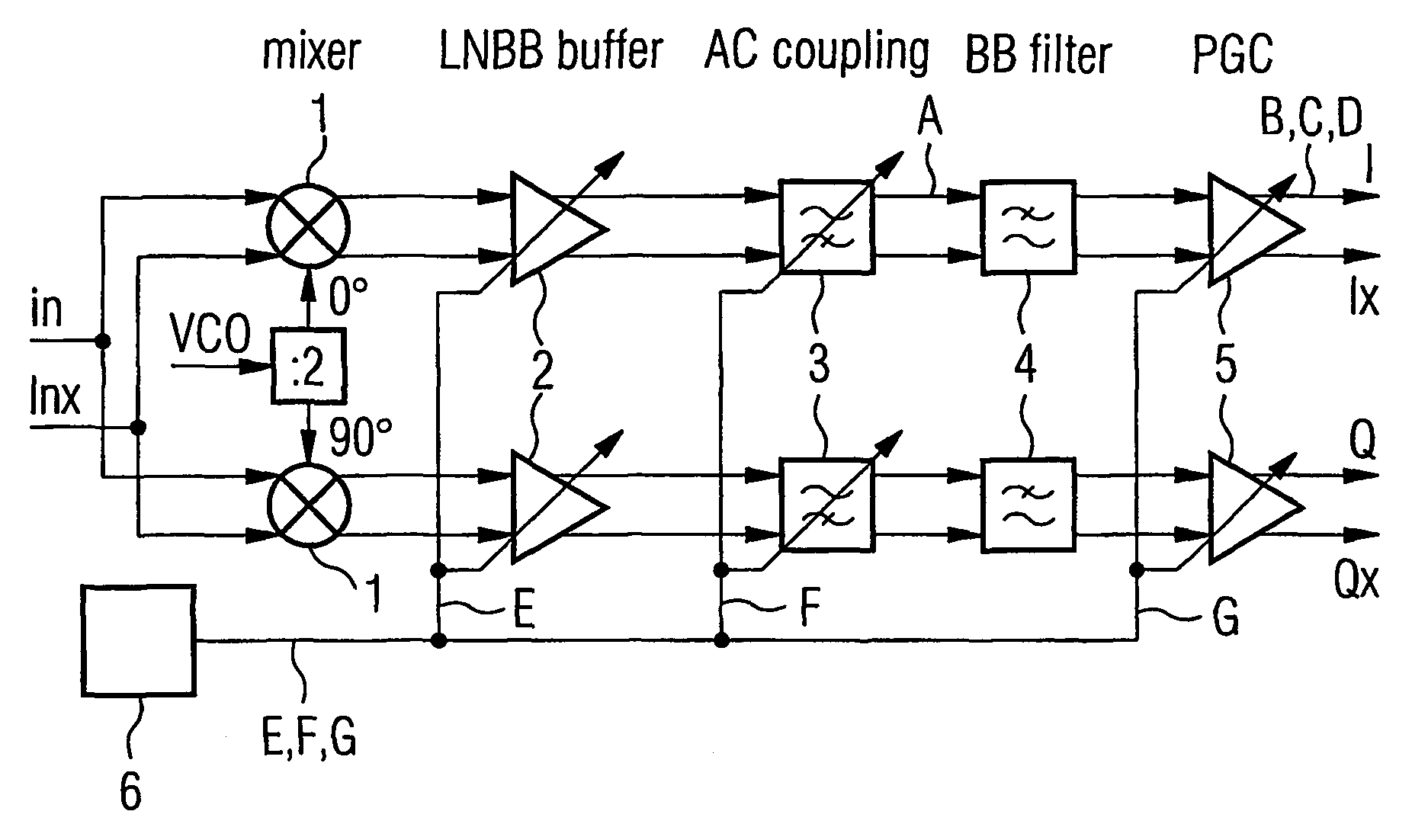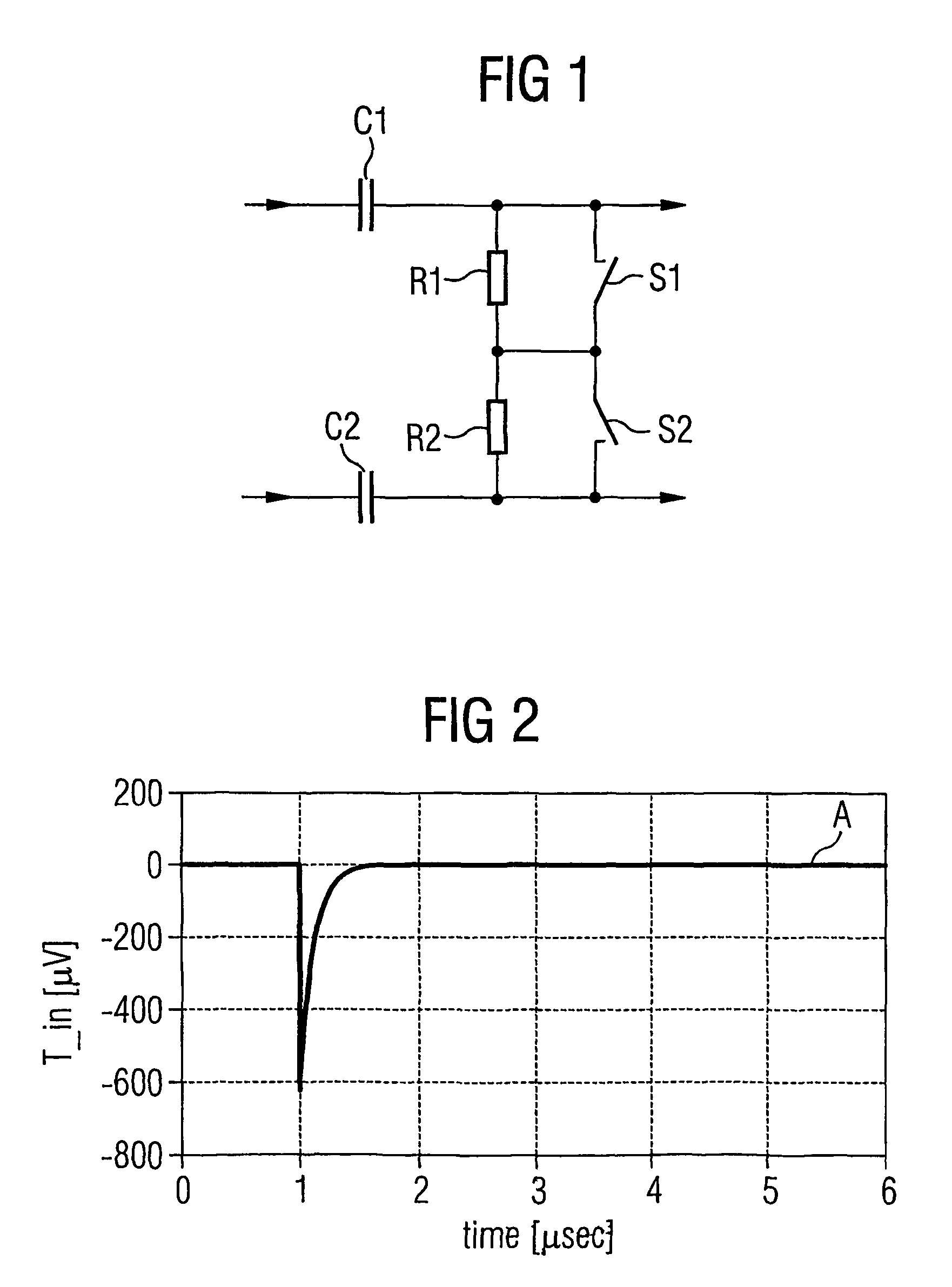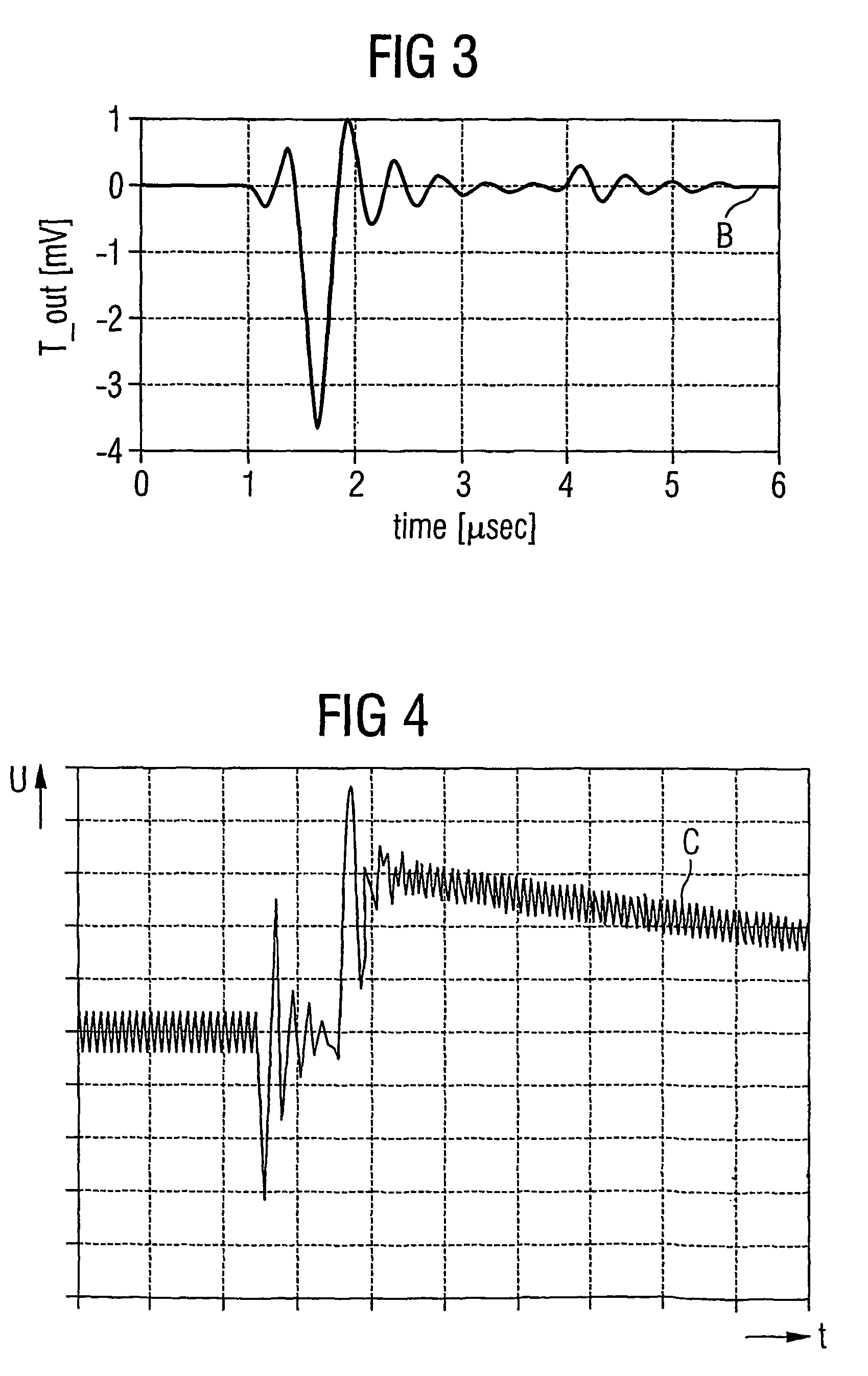Receiver arrangement with AC coupling
a receiver arrangement and ac coupling technology, applied in the direction of electrical apparatus, radio transmission, angle demodulation by oscillation conversion, etc., can solve the problems of reducing the useful signal, and reducing the system-dependent disadvantage of direct conversion, so as to reduce the transient caused by switching the gain factor. , the effect of avoiding any additional complexity
- Summary
- Abstract
- Description
- Claims
- Application Information
AI Technical Summary
Benefits of technology
Problems solved by technology
Method used
Image
Examples
Embodiment Construction
[0074]FIG. 1 shows a filter arrangement for AC coupling for use in a balanced receiver, to be precise in its baseband signal processing chain and preferably downstream from a low-noise variable-gain baseband amplifier which is arranged at the signal output of a frequency converter for direct conversion.
[0075]The arrangement shown in FIG. 1 has a respective series capacitance C1, C2 in the two series branches of the balanced baseband signal path. On the output side a respective resistor R1, R2 is connected to the capacitances, C1, C2, with the resistors R1, R2 which are connected in series with one another and form a parallel branch in the baseband signal path, being directly connected to one another by a further connection in each case. A first respective switch S1, S2 is connected in parallel with the first resistors R1, R2.
[0076]The arrangement shown in FIG. 1 is a high-pass filter with a switchable cut-off frequency, with the cut-off frequencies being formed from the component va...
PUM
 Login to View More
Login to View More Abstract
Description
Claims
Application Information
 Login to View More
Login to View More - R&D
- Intellectual Property
- Life Sciences
- Materials
- Tech Scout
- Unparalleled Data Quality
- Higher Quality Content
- 60% Fewer Hallucinations
Browse by: Latest US Patents, China's latest patents, Technical Efficacy Thesaurus, Application Domain, Technology Topic, Popular Technical Reports.
© 2025 PatSnap. All rights reserved.Legal|Privacy policy|Modern Slavery Act Transparency Statement|Sitemap|About US| Contact US: help@patsnap.com



